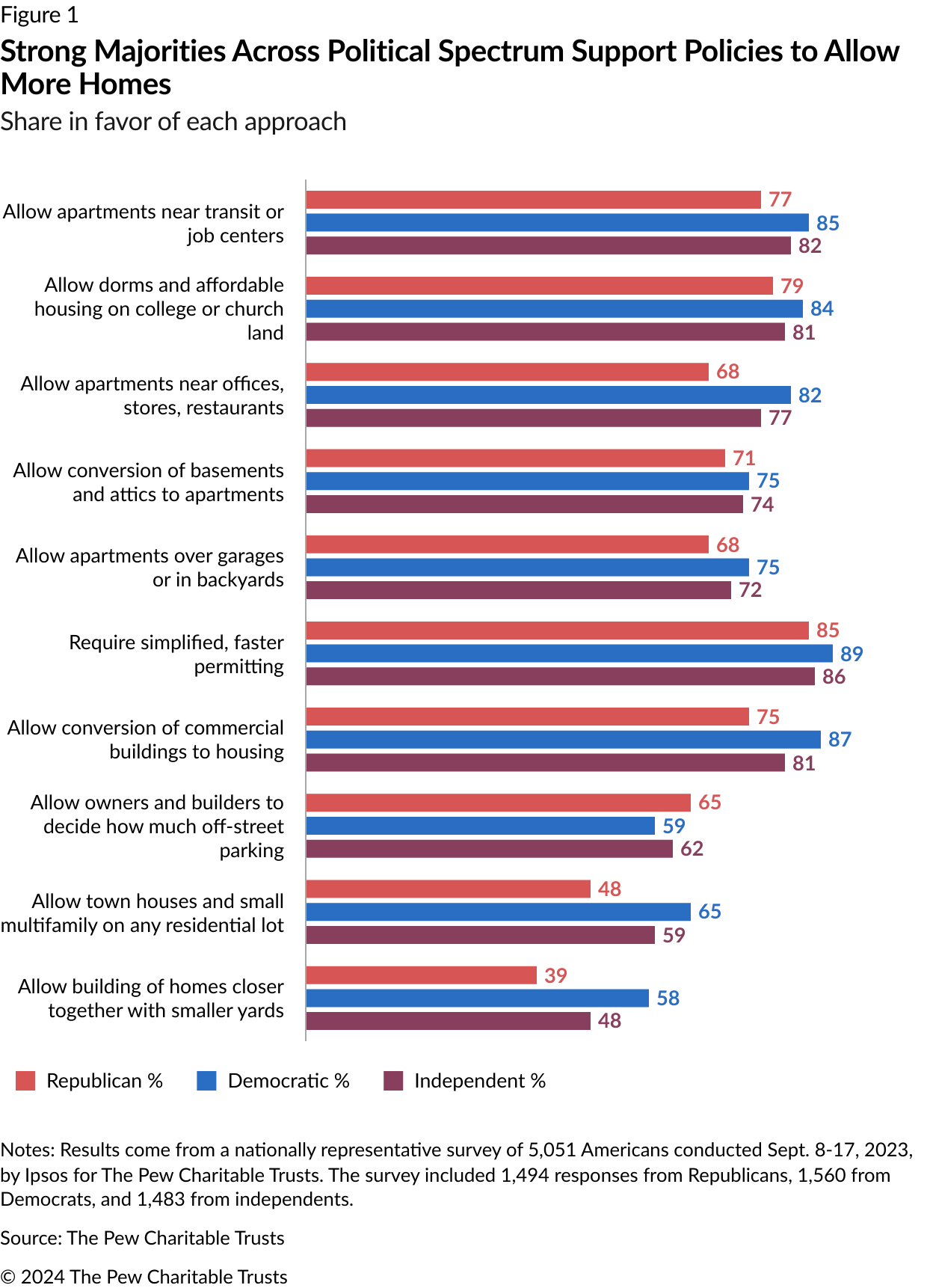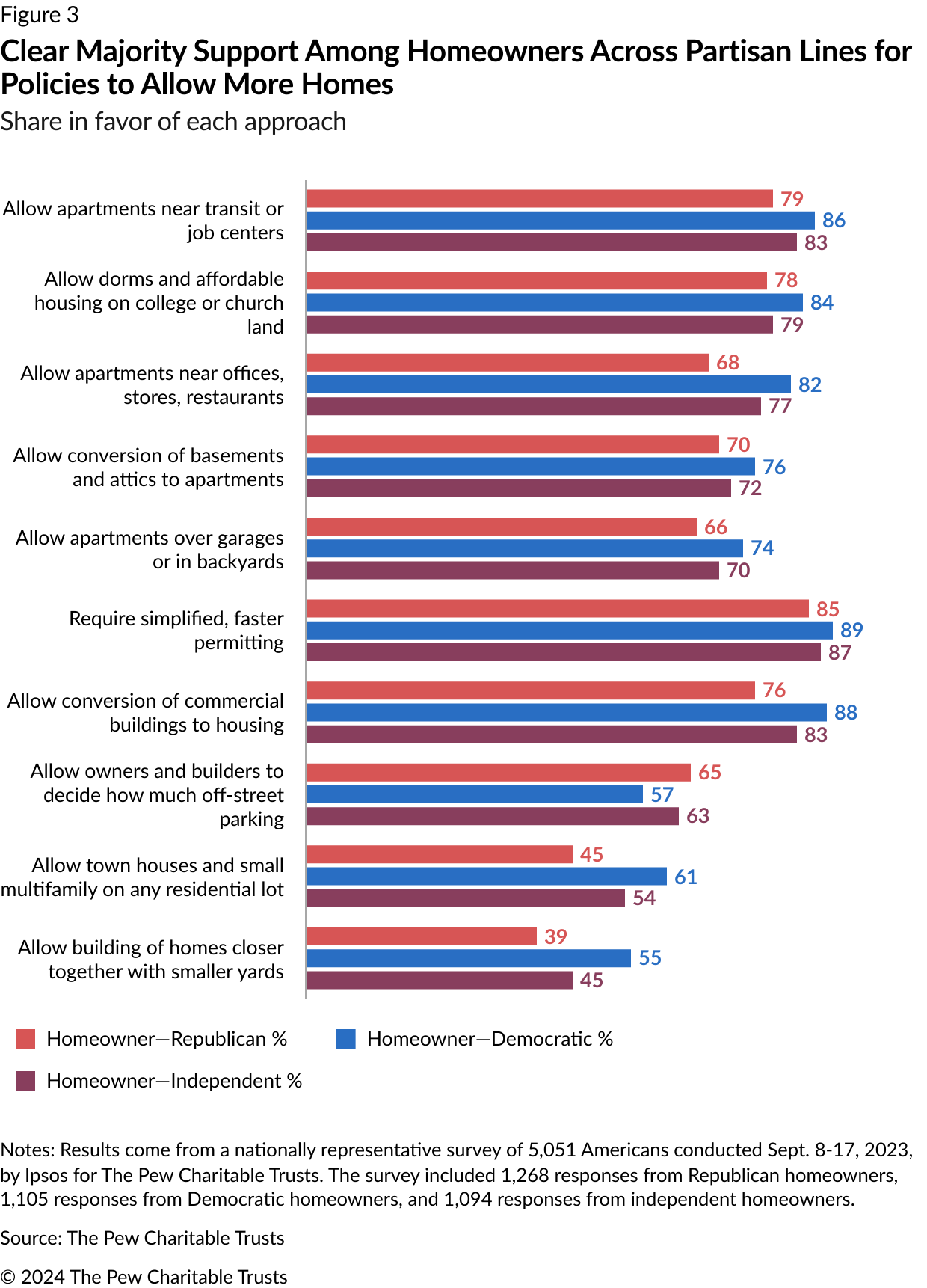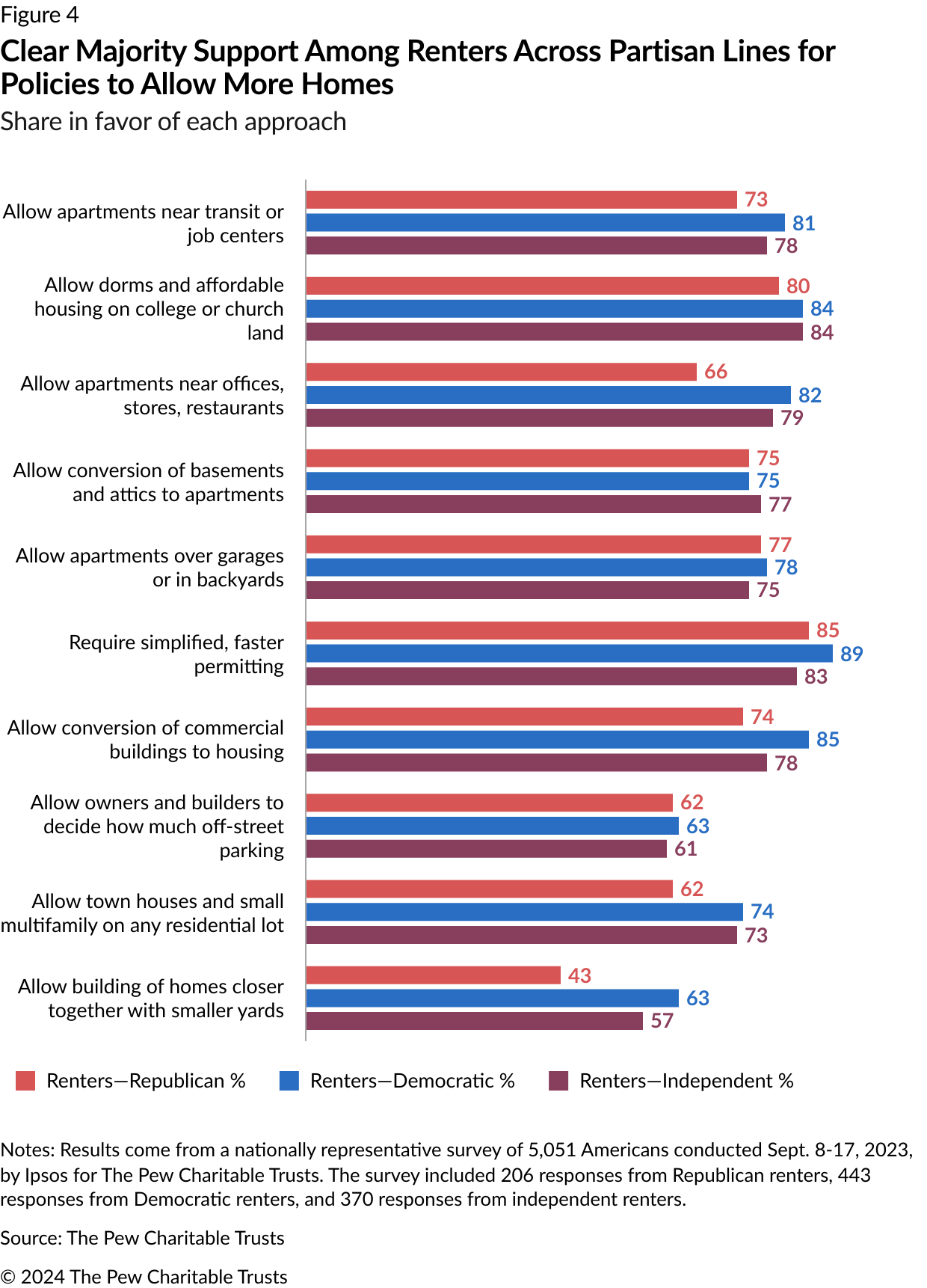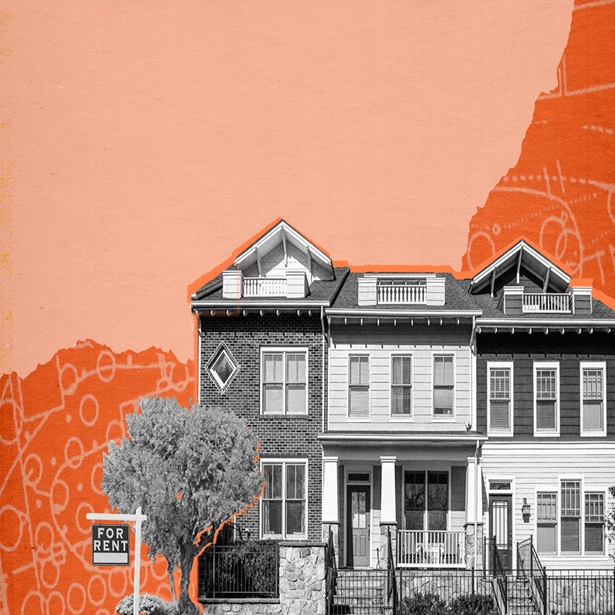Strong Support Across Partisan Lines for Policies That Boost Housing
Survey finds Republicans, Democrats, and independents all back measures that help promote more supply

For most Americans, housing is their largest regular expense, but an acute housing shortage of an estimated 4 million to 7 million homes and resulting skyrocketing rents and home prices mean millions more households are struggling to afford housing than in the recent past. Policymakers at all levels are looking at ways to help expand the supply.
A national survey released in late 2023 shows robust support for a range of policies that states and cities are enacting to allow more housing to be built and bring down costs. These policies are broadly popular among suburban, rural, and urban residents, and among homeowners, renters, and all income groups.
And, at a time when the nation’s political divide is so pronounced, the survey also indicates strong backing across the political spectrum for policies that would encourage more homebuilding. Republicans, Democrats, and independents all support most of the approaches described in the survey done for The Pew Charitable Trusts.
Although there were modest differences, in most cases, the divergence was by less than 10 percentage points. In fact, 8 of the 10 measures tested received majority support from all three groups.

Strong bipartisan support for pro-housing policies can also be seen across the nation’s four regions. All have seen rising housing costs, as a problem that was originally confined to large coastal cities has spread throughout the country. In response, Republicans and Democrats in the Northeast, Midwest, South, and West have all come to support policies that would allow more homebuilding. That includes majority support for 8 of the 10 approaches tested. Indeed, recent years have seen red and blue states nationwide enact legislation to make it easier to build homes. For example, those include states in the Northeast (Maine, Massachusetts, and Vermont), Midwest (Iowa, Nebraska, and Wisconsin), South (Florida, Texas, and Arkansas), and West (Montana, Utah, Washington, Oregon, and California).
Figure 2
Little Partisan Variation by Region in Support for Policies That Encourage More Housing
Share of Residents in favor of each approach
| Northeast | Midwest | South | West | |||||
|---|---|---|---|---|---|---|---|---|
| Rep. % | Dem. % | Rep. % | Dem. % | Rep. % | Dem. % | Rep. % | Dem. % | |
| Allow apartments near transit or job centers | 80 | 87 | 78 | 85 | 77 | 83 | 76 | 84 |
| Allow dorms and affordable housing on college or church land | 75 | 81 | 81 | 85 | 79 | 85 | 78 | 84 |
| Allow apartments near offices, stores, restaurants | 68 | 85 | 69 | 83 | 65 | 79 | 70 | 81 |
| Allow conversion of basements and attics to apartments | 73 | 73 | 66 | 75 | 72 | 74 | 75 | 79 |
| Allow apartments over garages or in backyards | 68 | 77 | 62 | 72 | 70 | 75 | 69 | 77 |
| Require simplified, faster permitting | 83 | 91 | 86 | 92 | 86 | 88 | 85 | 87 |
| Allow conversion of commercial buildings to housing | 74 | 89 | 80 | 92 | 75 | 86 | 71 | 84 |
| Allow owners and builders to decide how much off-street parking | 64 | 61 | 66 | 60 | 67 | 60 | 59 | 55 |
| Allow town houses and small multifamily on any residential lot | 43 | 64 | 51 | 64 | 48 | 65 | 50 | 66 |
| Allow building of homes closer together with smaller yards | 37 | 59 | 37 | 56 | 40 | 55 | 44 | 62 |
| Notes: Results come from a nationally representative survey of 5,051 Americans conducted Sept. 8-17, 2023, by Ipsos for The Pew Charitable Trusts. The survey included 239 responses from Northeastern Republicans, 368 from Midwestern Republicans, 596 from Southern Republicans, 291 from Western Republicans, 311 responses from Northeastern Democrats, 296 from Midwestern Democrats, 564 from Southern Democrats, and 389 from Western Democrats. Regions are as designated by the U.S. Census Bureau. |
Whether homeowners or renters, Republicans and Democrats expressed strong support for policies to allow more homebuilding. America’s soaring housing costs are affecting just about everyone, including renters struggling to pay rent or purchase their first home, homeowners witnessing their children struggle to find housing nearby, or homeowners stuck in their current homes, unable to afford a larger one for a growing family.
Seven out of ten policies enjoyed at least 60% support from homeowners and renters of both political parties. That includes policies to allow more apartments and condos to be built—for example, near train and bus stations, job centers, and in areas that are mostly used for offices, stores, or restaurants. The three policies that found less support, especially among Republican homeowners, could entail greater changes to existing residential neighborhoods composed of single-detached homes, for example, allowing new homes to be built closer together or allowing small apartment buildings. Still, cities, such as Houston and Minneapolis, that have allowed more homebuilding in existing residential neighborhoods have found that change in these neighborhoods has been gradual.


Notably, Republicans, Democrats, and independents are also largely aligned on the reasons why they support these policies. The Pew survey asked about nine reasons for supporting such changes. All three political groups cited “making housing more affordable” and “enable people to move closer to jobs and schools” among their top-three reasons.
Earlier Pew research highlights that jurisdictions that have reformed zoning to encourage more homebuilding succeeded in holding down housing costs compared with the national average or jurisdictions that have not made similar updates. Additional research, from Pew and the Bipartisan Policy Center, supports the academic consensus that high housing costs drive homelessness rates. That work, and Minneapolis’ recent experience, shows that homelessness tends to increase alongside rising housing costs and fall in areas that have added sufficient housing to slow the increase in housing costs.
Opposition to new homes has emerged during public meetings in some communities, especially when they impact residential areas of single-detached houses. However, research shows that when it comes to housing issues, those who speak at public meetings generally hold more negative views about allowing more housing as compared to the community as a whole.
And that reality seems evident in responses to questions about revamping housing rules. Although many issues facing Americans today produce large partisan splits, this survey shows that policy to enable more housing simply isn’t one of them.
Tushar Kansal is a senior officer with The Pew Charitable Trusts’ housing policy initiative and Andy Winkler is the director of the Bipartisan Policy Center’s housing and infrastructure projects.














